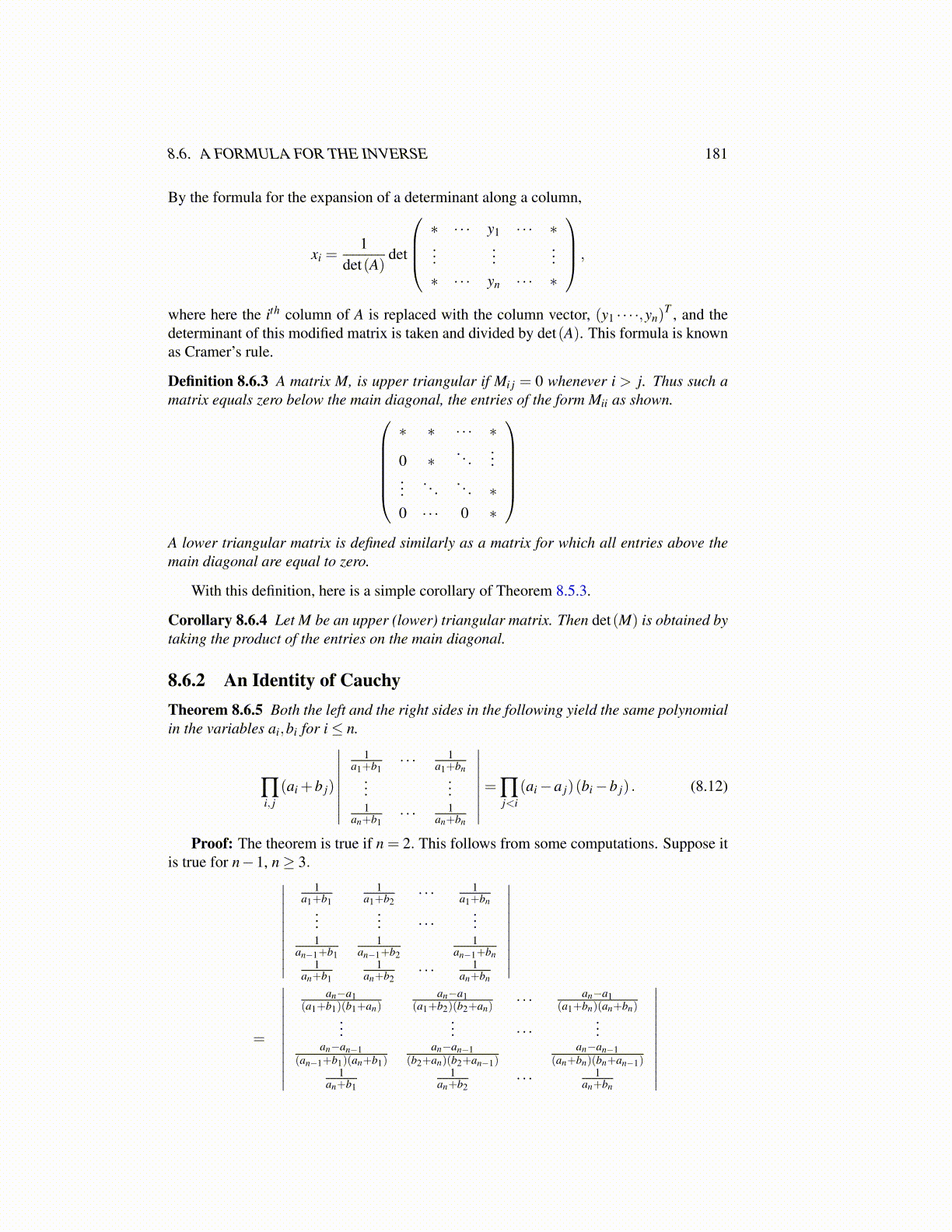
8.6. A FORMULA FOR THE INVERSE 181
By the formula for the expansion of a determinant along a column,
xi =1
det(A)det
∗ · · · y1 · · · ∗...
......
∗ · · · yn · · · ∗
,
where here the ith column of A is replaced with the column vector, (y1 · · · ·,yn)T , and the
determinant of this modified matrix is taken and divided by det(A). This formula is knownas Cramer’s rule.
Definition 8.6.3 A matrix M, is upper triangular if Mi j = 0 whenever i > j. Thus such amatrix equals zero below the main diagonal, the entries of the form Mii as shown.
∗ ∗ · · · ∗
0 ∗. . .
......
. . .. . . ∗
0 · · · 0 ∗
A lower triangular matrix is defined similarly as a matrix for which all entries above themain diagonal are equal to zero.
With this definition, here is a simple corollary of Theorem 8.5.3.
Corollary 8.6.4 Let M be an upper (lower) triangular matrix. Then det(M) is obtained bytaking the product of the entries on the main diagonal.
8.6.2 An Identity of CauchyTheorem 8.6.5 Both the left and the right sides in the following yield the same polynomialin the variables ai,bi for i≤ n.
∏i, j
(ai +b j)
∣∣∣∣∣∣∣∣1
a1+b1· · · 1
a1+bn...
...1
an+b1· · · 1
an+bn
∣∣∣∣∣∣∣∣= ∏j<i
(ai−a j)(bi−b j) . (8.12)
Proof: The theorem is true if n = 2. This follows from some computations. Suppose itis true for n−1, n≥ 3.∣∣∣∣∣∣∣∣∣∣
1a1+b1
1a1+b2
· · · 1a1+bn
...... · · ·
...1
an−1+b11
an−1+b21
an−1+bn1
an+b11
an+b2· · · 1
an+bn
∣∣∣∣∣∣∣∣∣∣
=
∣∣∣∣∣∣∣∣∣∣∣
an−a1(a1+b1)(b1+an)
an−a1(a1+b2)(b2+an)
· · · an−a1(a1+bn)(an+bn)
...... · · ·
...an−an−1
(an−1+b1)(an+b1)an−an−1
(b2+an)(b2+an−1)an−an−1
(an+bn)(bn+an−1)1
an+b11
an+b2· · · 1
an+bn
∣∣∣∣∣∣∣∣∣∣∣